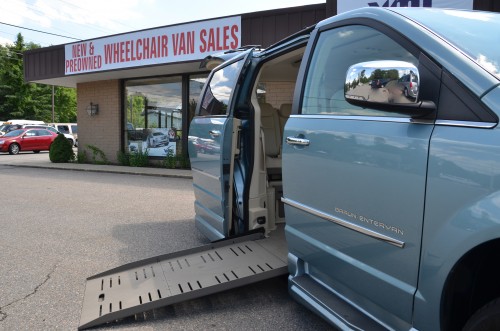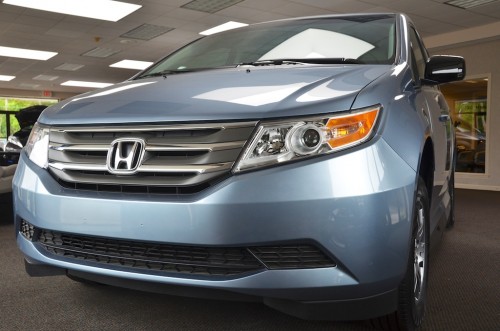Everyone understands that it’s a legal requirement to have their vehicles insured and recognizes the value of being properly insured in case of an accident. But, most people are not insurance experts. In fact, some aspects of vehicle insurance confuse many people.
In order to keep your accessible van as safe as you can make sure you’re protecting it with the right types of commercial auto insurance. Here are the primary types of insurance you’ll need:
Liability Insurance
Liability insurance is normally required by law in all parts of the United States. This coverage is designed to protect other people from suffering losses that are caused when your wheelchair van causes an auto accident. Liability insurance primarily focuses on two coverage areas: Bodily injuries and Property Damages.
- Bodily Injury – This section of your liability insurance policy helps pay for any injuries inflicted on other people from an auto accident. If your mobility van causes, or is found to be at fault for, an auto accident that causes people to get physically hurt, the bodily injury portion of your coverage pays for their medical expenses. When an injured person must be transported to the hospital for example, your bodily injury coverage can pay for the ambulatory bills and expenses. It also pays for the emergency room care, doctor’s visits, prescription medications, physical therapy, rehabilitation and other medical bills that are caused due to the auto accident. Bodily injury also pays for a person’s lost wages when they must miss work due to recovery times, and it pays for pain and suffering of the victims. When a person is killed in an auto accident, your bodily injury insurance can pay their funeral expenses as well.
- Property Damage – When a vehicle or other property sustains damages from an auto accident that was caused by your handicap van, the property damages portion of your liability insurance will pay for the cost of repairs.
Liability insurance can provide your wheelchair van with protection at varying levels, based on the amount of coverage you select. You can choose a standard split level policy or a combined single limit policy as well.
A split limit policy sets maximum benefit limits on two separate portions of an auto accident claim. Split limit policies will pay no more than the set limit per person for bodily injuries but no more than the total combined limit for all bodily injuries in an accident. It will also pay a separate maximum for property damages. Example: A liability split limit policy of $15,000/$50,000/$35,000 explains a specific payment maximum per accident. No more than $15,000 will be paid for any individual person’s bodily injuries in one accident; no more than $50,000 will be paid for the combined total of bodily injuries; and $35,000 is the maximum amount the policy will pay for property damages.
If you elect a single combined limit liability policy instead, there is no separate maximum limit defined for bodily injuries or property damages. There is just one maximum overall payout for the policy for each accident. A $50,000 combined single limit liability policy for example, would pay a maximum of $50,000 in damages per accident regardless of whether the damages were to people or property.
Medical Payments
Medical payments insurance is important coverage for a wheelchair van, because it pays medical related expenses that arise for your van driver and any passengers who were riding in the vehicle at the time of the accident. Coverage is for paying medical and related bills, such as ambulance transport, hospital care and follow up treatments. This insurance protects your driver and passengers without regard to who causes an auto accident. It is not available in all areas however, so be sure to contact one of your licensed representatives to determine if it’s an option for your policy.
Physical Damage Insurance
Physical damages insurance protects your wheelchair accessible vehicle itself. And it protects your you from having to pay the bills when the van is damaged or destroyed. This insurance is extremely important for you if you still have an outstanding unpaid finance loan because it provides you with the most protection possible. There are three types of physical damages insurance protection:
- Comprehensive Physical Damage Protection – Comprehensive damages protects you from a number of potential risks, perils and hazards. It does not protect against damages and losses caused by a collision or caused when your van overturns. It does however, protect against losses and damages caused by theft, break ins, vandalism and natural events. If your van is damaged due to a tree falling on it in a storm for example, your comprehensive damage protection coverage will pay for the repairs.
- Collision Protection – Collision protection is specifically designed to pay for damages and destruction that are caused by a collision or by a roll over event. If your van has a blowout and overturns for example, your collision damage protection will pay for the repairs. If the van backs into a building while trying to access a wheelchair ramp, the collision damage protection pays for those repairs as well.
- Specified Peril (CAC) – Pecified Peril coverage is also known as Fire and Theft with Combined Additional Coverage. This does not protect you against collision or roll over events. Instead, it protects you from just those perils that are specified on your insurance policy.
Uninsured or Underinsured Motorist
If your van is involved in an auto accident with another vehicle and that other vehicle was the cause for the accident, their liability insurance is supposed to pay for your bodily injuries and property damages. If the other driver does not carry insurance however, or if they do not carry enough coverage to pay all of the resulting bills, they are considered uninsured or underinsured. You can purchase protection against these risks with an uninsured or underinsured motorist policy. When the other driver is at fault but unable to pay for all of your damages, your policy will pick up the difference. This policy works much like your Liability policy.
- Bodily Injury – As covered with Liability Insurance.
- Property Damage – As covered with Liability Insurance.
- Collision Deductible Waiver (CDW) – When you carry an uninsured or underinsured motorist bodily injury policy on your wheelchair van, you can qualify for a collision deductible waiver (CDW). The CDW makes it so that you do not have to pay your standard insurance deductible when you make an uninsured or underinsured motorist accident claim.
Other Important Commercial Auto Insurance for Wheelchair Vans
- Special Equipment Coverage – This type of coverage covers every aspect of vehicle adaptation including mobility equipment such as a lift, ramp, lowered floor, kneeling systems, a lock-down system, or any other added adaptive driving equipment (hand controls and left foot accelerators).
- Rental – If your van is unusable due to an auto accident, rental insurance can pay for the cost of a temporary replacement.
- Towing – Towing insurance pays for the cost of towing your accessible vehicle from the scene of an accident when it is badly damaged.
- Accessories – Accessories insurance protects you from losses associated with extra devices you may have installed on your van. A wheelchair van taxi may have a mileage meter installed for example, and a communications radio to keep them in contact with their dispatcher.
** The limits of your coverage and your deductibles for each element of your policy will vary based upon what you’ve purchased from your insurance company.


